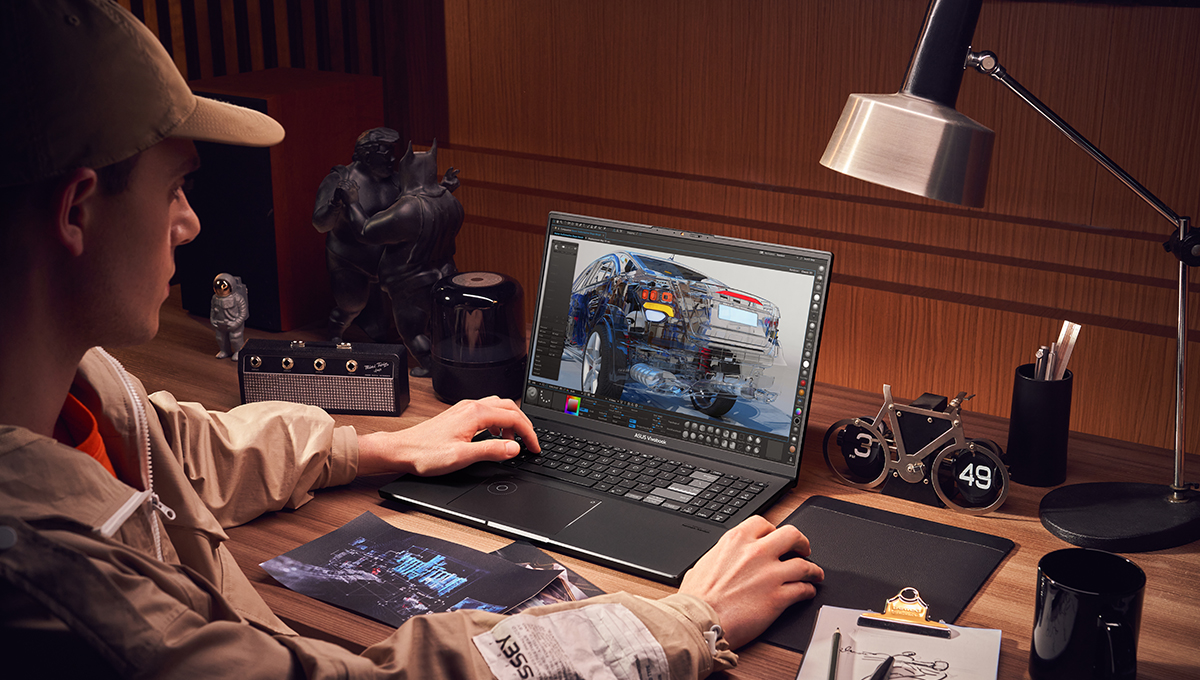Choosing the right tools for graphic design is essential for unleashing creativity. When you’re looking at online stores like Psero, It’s crucial to pick a laptop that fits your needs. You have to think about certain things, like how well it performs and how reliable it is. In this detailed look, we’re going to talk about laptops for graphic design. We’ll break down important features, look at what’s new, and give helpful tips to help designers find the right laptop for their work.
The choice of tools plays a pivotal role in shaping the creative process. Graphic designers, whether seasoned professionals or aspiring enthusiasts, rely heavily on their laptops as the primary canvas for bringing their visions to life.

Understanding the Landscape:
The landscape of graphic design laptops is diverse, offering a range of options to suit various needs and preferences. From sleek MacBooks to customizable PCs, designers have numerous choices that align with their workflows and design philosophies. As we explore operating systems, processing power, memory, storage, and display technologies, it’s clear that each element significantly impacts user experience and productivity.
Operating Systems: A Tale of Mac vs. PC
The debate between macOS and Windows continues to divide designers, with each offering unique benefits. MacBooks are renowned for their sleek design and seamless Apple ecosystem integration, making them popular among graphic designers. Their Retina displays and intuitive macOS provide a cohesive experience for those seeking simplicity and elegance.
PCs, however, offer diverse hardware configurations, customization options, and software compatibility. Windows-based laptops from brands like Intel and AMD provide unmatched flexibility and scalability. With touch-enabled displays, stylus support, and innovative designs, modern PCs are a strong alternative for designers seeking versatility and performance.
Processing Power: Unleashing Potential
Processing power is the core of any graphic design laptop, driving complex workflows and rendering tasks. The choice of CPU, whether quad-core or octa-core, affects the speed and efficiency of design applications. With demanding software like Adobe Creative Cloud, designers need powerful processors to handle intense tasks smoothly.
Memory Management: Bridging the Divide
RAM is crucial for multitasking, rendering high-resolution assets, and manipulating design elements. With requirements ranging from 8GB to 32GB, memory allocation is vital for modern design workflows. Sufficient RAM ensures fluid performance, whether working in Adobe Illustrator or Blender.
Storage Solutions: From Solid State to Boundless Creativity
Storage solutions, particularly the choice between SSDs and HDDs, highlight the need for speed, reliability, and scalability. SSDs, with their fast read/write speeds and silent operation, are the preferred choice for designers. Capacities from 256GB to 2TB provide ample space for design assets, ensuring rapid access and data transfer.
Display Technologies: The Canvas of Creativity
The display is critical for interacting with creations, impacting visual fidelity and clarity. High-resolution panels, from Full HD to 4K Ultra HD, offer unparalleled detail and precision. Vibrant color accuracy and pixel-perfect resolutions allow designers to refine their work meticulously.
Emerging Trends and Innovations: Shaping the Future of Design
Technological advancements are shifting graphic design laptops towards convergence, portability, and enhanced connectivity. Convertible laptops with touch-sensitive displays and stylus support combine traditional drawing tablets with portable workstations. Innovations in battery technology, thermal management, and form factor design are creating ultra-portable laptops that balance performance and mobility for modern designers on the go.
Conclusion: Laptops For Graphic Design
From MacBook Pro’s sleek design to the rugged elegance of Windows-based workstations, designers have numerous options catering to their unique preferences and workflows. By understanding operating systems, processing power, memory management, storage solutions, and display technologies, designers can make informed decisions that enhance their creative pursuits. As technology evolves, embracing these possibilities will enable designers to achieve new heights of excellence and creativity.
